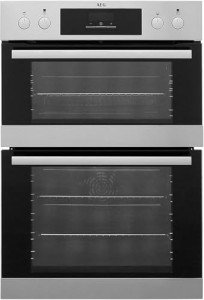Understanding Built-in Ovens and Hobs: The Perfect Kitchen Combination
As modern cooking areas develop, built-in appliances are becoming increasingly popular for both functionality and aesthetic appeals. Amongst these appliances, built-in ovens and hobs stand apart as vital elements for any culinary enthusiast or home cook. This short article checks out the advantages, features, and considerations surrounding built-in ovens and hobs. It also addresses typical questions, using an extensive guide to these kitchen basics.
What are Built-in Ovens and Hobs?
Built-in ovens are integrated into kitchen cabinets, creating a sleek, seamless appearance. They can be found in various types, including conventional, convection, and steam ovens, each catering to different cooking methods. Hobs, on the other hand, are the cooking surface areas that integrate with the kitchen counter top. They can be gas, electric, or induction, enabling cooks to choose based upon their cooking style and energy choice.
Benefits of Built-in Ovens and Hobs
- Space-Saving: Built-in models maximize kitchen area by getting rid of the requirement for freestanding units, developing an open and airy environment.
- Visual Appeal: Their smooth style adds to a modern-day, structured appearance in the kitchen.
- Improved Functionality: Built-in ovens often include innovative cooking innovation, providing a series of features like self-cleaning and wise controls.
- Modification: Manufacturers use a range of finishes and designs, permitting homeowners to tailor their appliances to match their kitchen décor.
Kinds Of Built-in Ovens
1. Standard Ovens
Conventional ovens use glowing heat from the bottom and can be perfect for baking.
2. Convection Ovens
Convection ovens have a fan that distributes hot air, ensuring even cooking. They lower cooking time and are best for roasting meats or veggies.
3. Steam Ovens
Steam ovens use wet heat to prepare food, maintaining nutrients and tastes. Built In oven and hob packages with installation are ending up being increasingly popular amongst health-conscious cooks.
4. Microwave Ovens
These ovens offer quick heating and cooking and serve different functions, from reheating leftovers to baking.
Types of Hobs
1. Gas Hobs
Gas hobs utilize gas or lp for cooking. They offer instantaneous heat control, making them a preferred amongst professional chefs.
2. Electric Hobs
Electric hobs have solid or ceramic surfaces that warm up through electric coils. They are easy to tidy but may take longer to heat than gas designs.
3. Induction Hobs
Induction hobs use electromagnetic energy to directly heat pots and pans, using rapid heating and energy performance. They cool down quickly and offer a safer cooking experience.
Factors to Consider When Choosing Built-in Ovens and Hobs
When picking built-in ovens and hobs, numerous factors need to be considered:
1. Space Limitations
Measure the offered area in your kitchen to make sure that the appliances will fit effortlessly into the kitchen cabinetry.
2. Cooking Style
Consider your cooking routines. If you frequently bake, a convection oven might be ideal. On the other hand, induction hobs are excellent for security and efficiency.
3. Spending plan
Prices varies significantly based upon functions and brands. Setting a budget plan assists narrow down the options.
4. Energy Source
Identify whether you desire gas or electric appliances. This decision can affect cooking efficiency and utility expenses.
5. Looks
Pick finishes and styles that match your kitchen's design. Stainless steel is a popular choice for a contemporary appeal.
Contrast of Built-in Ovens and Hobs
| Function | Built-in Oven | Built-in Hob |
|---|---|---|
| Type | Convection, steam, etc. | Gas, electric, induction |
| Cooking Versatility | High | Moderate to high |
| Cleaning Ease | Varies by design | Normally easy to clean |
| Setup Style | Integrated in kitchen cabinetry | Flush with counter top |
| Energy Efficiency | Differs by model | Induction normally most efficient |
FAQs About Built-in Ovens and Hobs
1. Are built-in ovens more pricey than freestanding models?
Yes, built-in ovens usually come with a higher cost due to their design and setup requirements. Nevertheless, they typically use advanced features.
2. Can I replace my existing freestanding oven with a built-in model?
Yes, it's possible to change a freestanding oven with a built-in design, but you may require to make changes to your kitchen cabinetry and kitchen layout.
3. What maintenance do built-in ovens and hobs need?
Regular cleansing is important. Numerous built-in ovens come with self-cleaning functions. It's likewise essential to keep the hobs without spills and grease.
4. Are induction hobs safe for households?
Induction hobs are considered much safer than gas or electric choices since they just warm the pots and pans, decreasing the danger of burns or accidents.
5. How can I maximize the effectiveness of my built-in oven and hob?
To make the most of efficiency, always pre-heat the oven when required, use the appropriate size pots or pans on the hob, and consider using the recurring heat from your hob after cooking.
Built-in ovens and hobs offer various benefits, making them popular options for contemporary cooking areas. Their space-saving designs, advanced features, and aesthetic appeal add to their high need. By considering factors like area, cooking style, and spending plan, homeowners can select the ideal combination of appliances that best match their cooking requirements. Whether through gas, electric, or induction hobs, and a range of oven types, the right built-in kitchen appliances can improve the cooking experience while raising the total aesthetic of the kitchen.

